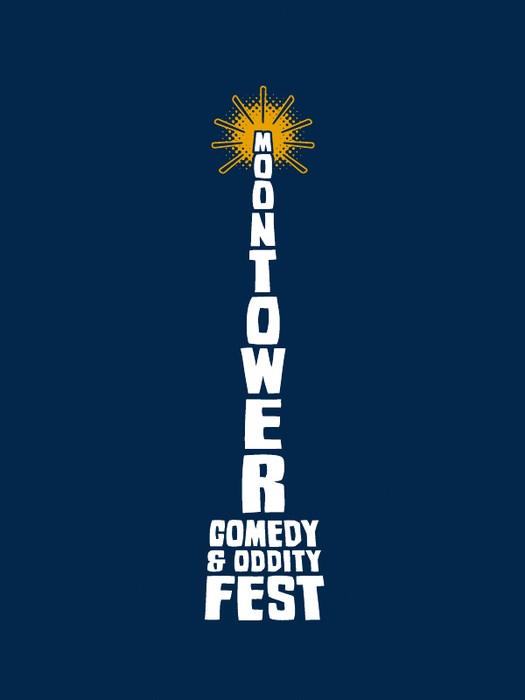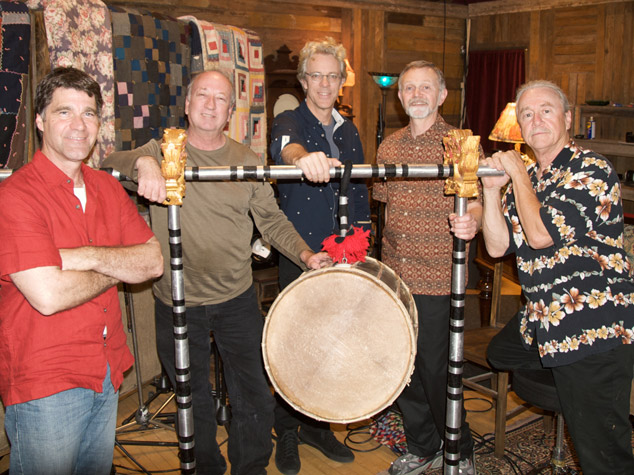Big Top Thoughts: The Lone Star Circus
The Lone Star Circus continues to blossom, and show that the circus arts are deeper than you think, with Zingari at Dallas Children’s Theater.
published Thursday, December 31, 2015
Zingari features the aerial arts of acrobats doing maneuvers suspended from a hoop or straps, or while climbing silks or corde lisse. There are the equilibrium arts like rolla-bolla and hand balancing, and the cyr wheel’s merger of equilibrium and object manipulation. More object magic with expert juggling and Hula-Hoops, plus the muscular finesse of contortion and Risley acrobatics. Clowns, of course, the heart of the circus and the veins that keep it connected. And trained cats.
The theme of Zingari is gypsy culture, charmingly brought to life by the show’s hosts, Lone Star Circus founder Fanny Kerwich and her brother, Jean-Marie Kerwich, whose circus family roots go back eight generations in France. You can practically smell the aromas of Mediterranean cooking waft from the window of a small caravan serving as part of H. Bart McGeehon’s bohemian scenic design.
After a clever opening, with performers entering from all parts of the Baker Theater to raise the circus tent, the show unfurls at a bright pace. Under the direction of Fanny Kerwich, vignettes on side stages keep audience attention away from prop changes on the main stage. The rigging and technical direction is exceptionally smooth under the aegis of Ricardo Espana.

Up In the Air
The poses and body comportment of aerial arts are balletic, yet the strength required rivals any bodybuilder. Nina Chubrikova’s background as a Russian rhythmic gymnastic shows in her incredible timing on the aerial hoop, also in the selection and editing of her excellent music. Liquid and flowing, rather than the usual aerial hoop approach of reeling from one trick to another, it’s a graceful feast for ears and eyes.
Contortionists are not famed for grace, but the legs of Chandmanizaya “Zaya” Tserendorg of Mongolia embody it perfectly. While turning herself into a human knot by placing one or both legs behind her head, back-bending to touch her head to her feet, and doing oversplits of more than 180 degrees, her legs in the air move in elegant filagrees, performing arabesques and quatrièmes with aplomb. Later on in an adagio act, dangling from straps with support from her aerialist partner Mendbayar “Mendee” Chuuluunbaatar, they soar in beautiful balletic postures and impossible contortions as beauty and strength in motion.
Aerialist and competitive swimmer Stephanie Stewart performs on the corde lisse. She lithely skims up and down the thick rope, assuming difficult poses and tumbling down in dramatic drops. The Dallasite took up aerial arts as an adult and is developing nicely on corde lisse and the similar silks, though her transitions still need some work. The live guitar accompaniment by Jean-Marie Kerwich was a nice touch and a welcome respite from recorded soundtracks.
Objects of Circus Affection

Zingari’s gypsy theme and attitude of play came together perfectly with Asaf Mor on the cyr wheel, a human-sized metal hoop that the performer grasps from the inside, appearing much like DaVinci’s Vitruvian Man. Looking sleekly bohemian and performing to a gypsy soundtrack, the strapping Israeli native spun himself and the wheel about the stage like a massive gyroscope, sometimes vertical, other times mere gravity-defying inches above the floor, and every angle in between. Yet Mor’s main gig is an engineer. He does the cyr wheel for fun.
Canadian-born Rejean St. Jules, a juggling fixture for decades in Las Vegas, emerged from retirement to train his son Sebastian in the art. They present the precise art of sound juggling, the use of balls to solicit sound, such as playing melodies on large floor keyboards. While standing inside triangular contraptions, they toss balls against the sides for percussive effect, which clashed with the symphonic backing track and made my young companions contort their faces from the dissonance. D’Drum or other orchestral percussion would fare far better and jive more with the younger partner.
The Hula-Hoop, best known as a children’s toy and a fixture at hippie drum circles, becomes a circus art in the right hands and hips. Dallas native Jesse Patterson is developing rapidly as a Hula-Hoop artist since starting with the Lone Star Circus just a few years ago. Sure, she can spin hoops in all directions and from every body appendage, and she can swivel a couple dozen silver hoops on her torso at once to transform into an undulating vision of argent radiance. But it’s her creative transitions and snappy lagniappes that project great potential.
Balancing Acts & Risley What?
No circus act has a better name than rolla-bolla, so fun and so accurate. Russian born Kirill Rebkovets proves to be a superb equilibrium artist. Cylinders, balls and boards are vertically stacked with the performer atop. To accommodate the constantly shifting fulcrum, he shifts, slides, rotates, tilts and pivots to keep the stack intact. . The slightest of body movements—shifting a hip, shrugging a shoulder, bending a knee—along with the ballast of arms maintain the illusory balance. Rebkovets ups the ante, making the stack taller, more complex and unstable, performing increasingly difficult maneuvers while balanced. A wholly engaging act, my young companions (along with the rest of the audience) move in their seats with the shimmying stack, as if trying to help Rebkovets in his rolla-bolla quest.
Nina Chubrikova performs a second time with her partner, Yury Kuznetsov, as Duo Resonance in a hand balancing act with bodies held as stiff and flat as planks, pushing Chubrikova’s strength to the very shaky limit. Not exciting stuff to my young companions, but impressive when you recognize how easy they make the extreme effort appear.
The Anton Brothers, Maximilian and Emanuel Laurino, from an Argentinian circus family, provides the “whoa” of the show. In the Risley act, also called antipode, Maximilian lays backward with feet in the air. Emanuel performs feats of balance and strength while perched atop and being spun at high speed by the brother below. Think of it as foot juggling a very wiggly human. Maximilian does a little kick and sends Emanuel flying almost out of sight, only to return and land on Max’s feet in some crazy pose. Takes perfect timing, extreme muscle strength, and tremendous trust.

Cats & Clowns
The trained house-cat act of Russian-born Mayya Panfilova enthrall my young companions the most. Cats scale poles and launch from the top, leap between tiny platforms and through hoops, ride balls down elevated tracks, and traverse narrow poles, sometimes upside down, with encouragement by the saucy Panfilova.
The heart of circus is clowning, and the heart of clowning in Dallas is Dick Monday, known as Monday, and his partner Tiffany Riley, who goes by Slappy. Whether his schtick as an impossible to train feline or his attempts to flamenco dance on bubblewrap, Monday makes an art out of failure that my young companions adore. He mooned the audience (using a butt mask), which set off werewolf nonsense and a send-up of Michael Jackson’s Thriller video. Slappy’s mischievousness had them in giggles—she wields a mean leafblower.
But one and all of every age are mesmerized when said leafblower inflates a giant, and very sturdy, red balloon. Slappy slips the opening over her head and before you know it slides it over her entire body and crouches on the floor as a gigantic lumpy balloon. Through a fascinating series of tumbles inside the balloon, Slappy’s head comes 180 degrees to the opening, and she emerges in a self-birth. Every person is blissfully in the moment and in total focus on Slappy. Very zen.
(Slappy and Monday’s monthly NY Goofs vaudeville show at the Pocket Sandwich is a must-catch attraction for circus fans, featuring many of the local Zingari performers and more.)
Continuity, Keyboards & Children
Lone Star Circus continues to deepen as an annual show, transforming from a traveling circus feel to a cohesive point of view and personality. The acts selected by artistic director Dominique Jando provide something to appeal to all types, from dance fans of physical nuance to regular joes who want to be wowed, from older folks who desire comfortable traditional acts to youngsters that need edgier entertainment. The segues are sharper than before, though the opening and closing still lack momentum.
The weakest link is the music. Acts are all too often performed to bombastic musical scores that wildly clash with each other. Some songs are excruciatingly loud and others muted. The gypsy theme too seldom extends to the music. While Cirque du Soliel may have its blowhard aspects, its use (usually) of a live band and musical themes stabilize and tie together their shows, though does entail an expense.
When pianist Thiago X. Nascimento of Open Classical is at the musical helm, the play aspect of the circus comes alive. His accompaniment of Slappy and Monday is always on target, accentuating the action and even helping people get the most subtle gags. His choice of bright keys and lilting fingerwork imparts a carnival feel. But he is too hard to experience buried in the wings.
Seeing through my young companions’ eyes of wonder re-connects me to the inner mirth that drew me to comedy in the first place. They laugh at and adore Slappy and Monday, in the same way that I thought Red Skelton hung the Moon. I long to show them DVDs of Ernie Kovacs.
Mostly I wonder if they see the metaphors that my eyes do. The trust of the aerial duos and corde lisse climber, the intense cooperation of the Risley act, the cosmic rotation of the cyr wheel. Do they see how rolla-bolla exemplifies the ever-shifting quest for balance each human must face? Or the shapeshifting spirituality of the contortionist? Perhaps not, but the metaphors remain.
» Read our feature on the Lone Star Circus here 
Original post: http://www.theaterjones.com/ntx/reviews/20151230023854/2015-12-31/Dallas-Childrens-Theater/Zingari

